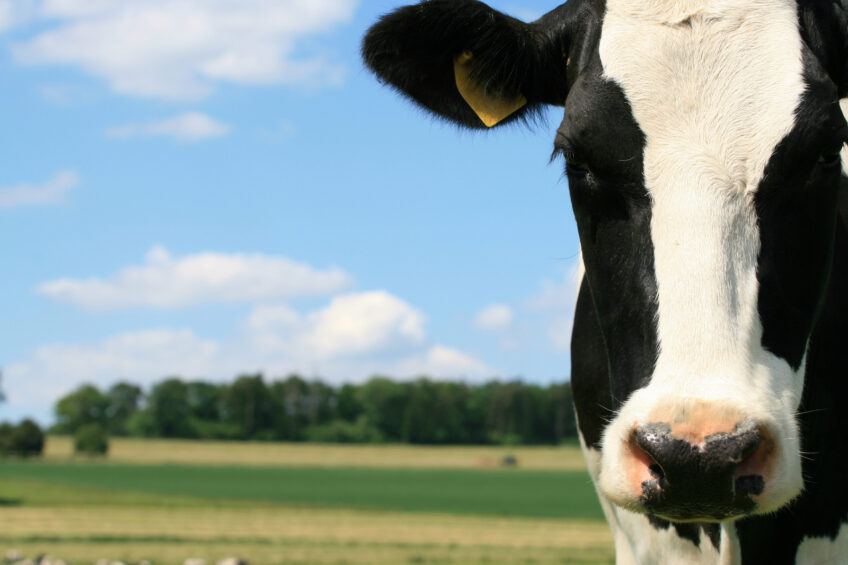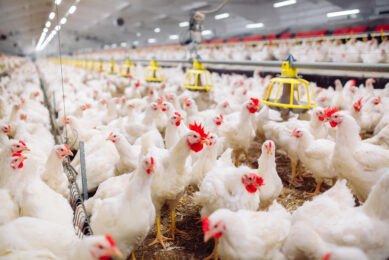A new generation of organic selenium

The quest for animal nutrition companies is to make the feed additives more digestible and more effective. A new source of organic selenium does just that.
Selenium (Se) is an essential trace element for human and animal health and therefore an adequate level in the diet is crucial. It can be supplied via raw materials or via additional supplemented selenium. Some of the most important roles of selenium are related to keeping an optimal antioxidant status and immune function. Selenium has an important function in reducing oxidative stress via the selenium containing enzyme gluthation peroxidase (GSH-Px). This enzyme protects tissue from oxidative damage.
Optimal selenium supply also improves reproduction parameters in amongst others poultry breeders, ruminants and aquaculture. It has also been associated with improved antioxidant status, improved immune response, improved growth and feed conversion in poultry and pigs and improved meat quality (reduce drip loss) in several animal species. Selenium from feedstuffs is predominantly in the form of L-selenomethionine, which is the natural form of selenium in plant and animal tissue. The supplemented selenium can be either in an inorganic or an organic form. The bioavailability of inorganic selenium is rather limited and therefore, replacing conventional inorganic selenium (sodium selenite) with an organic form has received much attention in recent years.
Effective form of organic selenium
The traditional way of supplying organic selenium is in the form of selenized yeast, a product which has been grown in a high selenium medium. Part of the methionine in the yeast protein is replaced by L-selenomethionine. However, the full replacement of methionine by selenomethionine is not possible (Schrauzer, 2006). Yeast contains selenium mainly as selenomethionine but also has a significant amount of selenium in other forms (Burk, 2006).
 Figure 1 – Digestion of selenised yeast and absorption of selenomethionine. Figure 1 – Digestion of selenised yeast and absorption of selenomethionine. |
In the intestinal tract of the animal, the protein in selenized yeast is broken down into small peptides and free amino acids. The selenomethionine in its free form can be absorbed in the intestine as an amino acid in the same way as methionine (Figure 1). In the metabolism, selenomethionine enters the methionine pool and can be incorporated into body proteins. Via this way selenomethionine is able to build up selenium reserves in the body. However, all other forms of selenium in selenized yeast follow the same pathway as inorganic selenium. They are reduced to generate hydrogen selenide in the selenium pool, which in turn is converted to selenophosphate for selenoprotein biosynthesis or is excreted. Therefore the remaining part of selenium in selenized yeast is not considered to be more effective than inorganic selenium. Only the L-selenomethionine in selenized yeast is the effective organic selenium (Figure 2). Several producers have registered selenium yeast products for the animal nutrition market. In Europe, the minimum level of selenomethionine in these products is set at 63%.
 Figure 2 – Metabolism of selenium (adapted from Burk 2006). Figure 2 – Metabolism of selenium (adapted from Burk 2006). |
If we take into account the digestibility of selenized yeast (estimated 80%), it can be concluded that the amount of effective digestible organic selenium is around 50% (63% selenomethionine x 80% digestibility). In practice the concentration of selenomethionine in selenized yeast is widely variable and even the minimum of 63% is not always achieved. This has been demonstrated in a review of in total 11 commercial products, where an average of 51.7% was found with a range of 24.8-69.7% (AllAboutFeed, August 2012).
 Figure 3 – Effective digestible organic selenium in defferent selenium sources (expressed as % of total selenium). Figure 3 – Effective digestible organic selenium in defferent selenium sources (expressed as % of total selenium). |
Higher bioavailability
Recently, a new type of organic selenium* has been introduced in the animal nutrition market. It contains only L-selenomethionine and has 100% of its selenium in effective organic form. Figure 3 shows the difference in effective digestibility compared to selenized yeast. This has been shown in several trials. If an animal is able to absorb more organic selenium from the diet, it is able to transfer more to the milk or to the eggs. The amount of selenium in milk and eggs is a good indicator for the selenium status of the animal and therefore the bioavailability of selenium sources can be evaluated by measuring the amount of selenium in animal products such as eggs or milk. Figure 4 shows the results of a trial in laying hens in which different sources and dosages of selenium were evaluated. Laying hens that received selenized yeast in the diet were able to deposit more selenium in the eggs compared to laying hens that received inorganic selenium. Moreover, the group that received a diet supplemented with the new organic selenium source had the highest selenium in the eggs, which was significantly higher compared to the selenized yeast. This trial demonstrates the higher bioavailability of selenized yeast above inorganic selenium and the superior bioavailability of the new organic selenium source over selenized yeast.
 Figure 4 – Selenium in eggs related to the Figure 4 – Selenium in eggs related to the selenium source and dosing in the feed (Delezie et al, 2013). |  Figure 5 – Selenium in milk related to the Figure 5 – Selenium in milk related to the selenium source in the feed (0.3 mg/kg) (Vandeale et al, 2014, submitted). |
The effect of different sources of selenium has also been evaluated in dairy cows. Three different sources of selenium were added to the diet of lactating cows and the level of selenium in the milk was analyzed as an indicator of bioavailability. Cows that received selenized yeast had a higher selenium content in the milk in comparison to cows that received inorganic selenium. The cows that were supplemented with the new organic selenium source had the highest selenium content in the milk (Figure 5).
Benefits
With the introduction of new form of organic selenium, new opportunities arise for animal nutritionists. The new generation of organic selenium guarantees all its selenium in an effective digestible organic form. For the same amount of total selenium this provides the double amount of effective organic selenium in the feed. Not only does this lead to superior effects in terms of bioavailability, it also ensures the lowest cost price per unit of effective organic selenium.
* Excential Selenium4000, Orffa/Excentials
Join 13,000+ subscribers
Subscribe to our newsletter to stay updated about all the need-to-know content in the dairy sector, two times a week.










